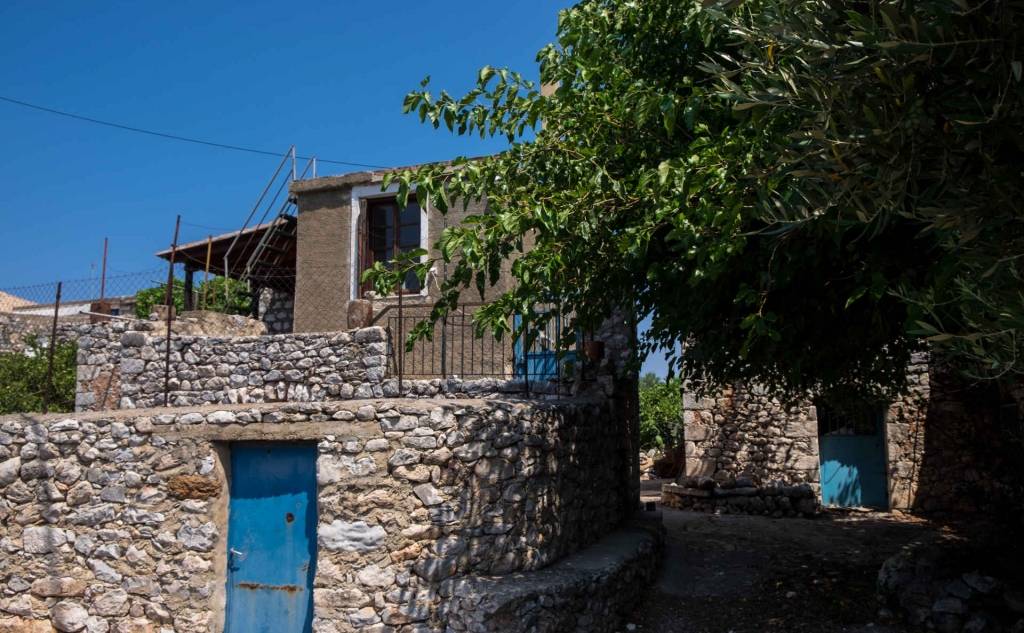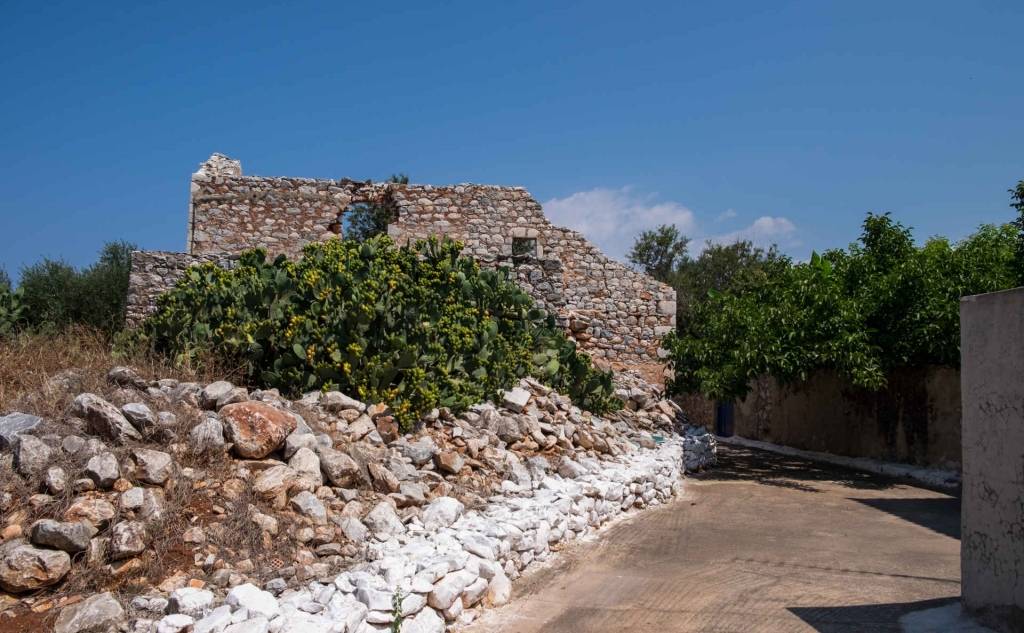






Charouda is a small settlement of 31 inhabitants, built at an altitude of 150 metres. If you get there, the ruined Early Christian Temple of Sotiras and the Byzantine Temple of Taxiarchis are worth visiting.
The church dates back to the 11th century and is cruciform with a dome. Built-in dishes are preserved in the dome and arch of the sanctuary, while on the east side, there is an inverted marble slab with a two-pronged ancient inscription. The church is decorated with post-Byzantine frescoes of the 18th and 19th centuries. The depiction of the Virgin Mary with her hair loose, mourning in one sense, is of great interest. On the temple's east side, visitors can see the architrave depicting a centaur aiming at an animal with his arrow. At the same time, the door and windows are decorated with elaborately carved marble—large single-storey volumes of local marble from the central masonry and floor of the temple. Finally, in the external surrounding space, the huge rock houses one of the largest rainwater tanks in the whole of Mani in its natural pit.
If one walks about 2 kilometres south of Charouda, at the location of "Galounia", one will meet the "Coralion" cave entrance.